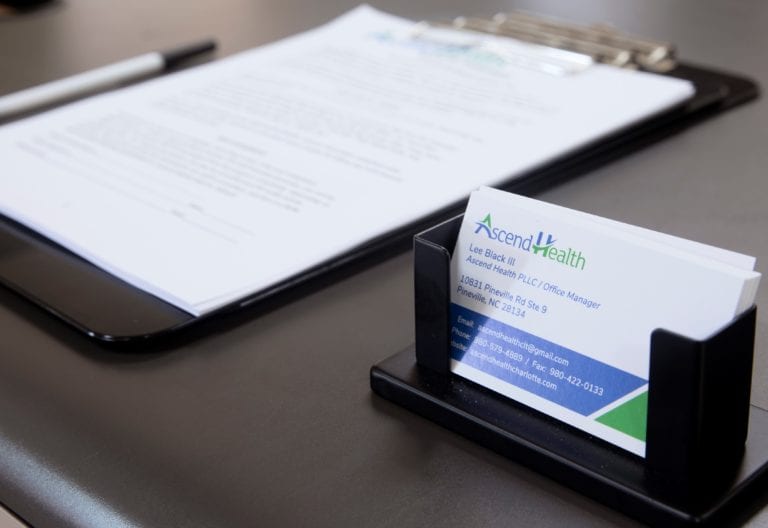Welcome to Ascend Health, where we believe in hope and healing for those battling opioid addiction. In this comprehensive guide, we will take you on a journey to understand Suboxone, a medication that has brought hope to countless individuals seeking recovery from opioid addiction.
At Ascend Health
our mission is to provide compassionate and effective care to individuals struggling with opioid addiction. We understand the devastating impact of addiction on individuals and their communities. This guide aims to shed light on Suboxone, a medication that offers a path to recovery and a chance at a brighter future.
Opioid addiction is a nationwide crisis, affecting millions of lives. It’s essential to understand its nature, including its physical and psychological effects. Left untreated, opioid addiction can lead to dire consequences.
Understanding Opioid Addiction
Opioid addiction, often characterized by the misuse of prescription painkillers or illegal opioids like heroin, can quickly spiral out of control. Some key points to understand include:
- Physical Dependence: Opioids can create a physical dependence, leading to withdrawal symptoms when use is reduced or stopped.
- Psychological Impact: Addiction not only affects the body but also changes brain chemistry, leading to cravings and compulsive drug-seeking behavior.
- Social and Economic Consequences: Opioid addiction can strain relationships, impact employment, and lead to legal issues.
The Science Behind Suboxone
What is Suboxone
Suboxone is a medication specifically designed to assist individuals in their journey to recovery from opioid addiction. It combines two active ingredients: buprenorphine and naloxone.
- Buprenorphine: This partial opioid agonist reduces withdrawal symptoms and cravings, allowing for a smoother transition to sobriety.
- Naloxone: An opioid antagonist, naloxone is included to deter misuse. If someone tries to inject or misuse Suboxone, the naloxone component can precipitate withdrawal.
How Suboxone Works
Suboxone works by binding to the same receptors in the brain that opioids do, but it does so in a way that is less likely to cause euphoria or dangerous respiratory depression. Key points include:
- Reduction of Cravings: Suboxone helps individuals control their cravings for opioids, making it easier to focus on recovery.
- Withdrawal Symptom Management: It also mitigates the discomfort of opioid withdrawal, which is often a major barrier to quitting.
- Long-Lasting Effects: Suboxone’s effects can last up to 24 hours, providing stability and reducing the need for frequent dosing.
Safety and Effectiveness
Suboxone is a safe and effective treatment when used as prescribed by healthcare professionals. Its effectiveness lies in its ability to help individuals regain control of their lives:
- Medical Supervision: Suboxone treatment is typically administered under medical supervision to ensure safety and appropriate dosing.
- Regular Monitoring: Patients are closely monitored to adjust their treatment plan as needed, optimizing their chances of success.
- Improved Quality of Life: With opioid addiction under control, individuals can experience improved physical and mental health, rebuild relationships, and regain a sense of purpose.
Overcoming Withdrawal Symptoms
One of the most challenging aspects of quitting opioids is the painful withdrawal symptoms that can occur. Suboxone eases this discomfort, making it easier for individuals to start their recovery journey.
- Reduction of Withdrawal Duration: Suboxone can significantly shorten the duration and severity of withdrawal symptoms, making the process more manageable.
- Improved Retention in Treatment: The alleviation of withdrawal symptoms encourages individuals to stay in treatment, increasing their chances of success.
Reducing Cravings and Preventing Relapse
Cravings for opioids can be intense and lead to relapse. Suboxone helps by:
- Blocking Opioid Effects: Suboxone’s active ingredients bind to the same receptors as opioids, effectively blocking their effects. This reduces cravings and makes it difficult to get high from other opioids.
- Reducing Risk of Overdose: By preventing the use of other opioids, Suboxone lowers the risk of fatal overdoses.
Improving Quality of Life
With addiction under control, individuals can focus on rebuilding their lives:
- Reconnecting with Family: Improved relationships with loved ones are often a significant motivator for recovery.
- Education and Employment: Many individuals regain the ability to pursue education and employment opportunities.
- Emotional Well-Being: Suboxone treatment can help stabilize mood and mental health, allowing individuals to experience a better overall quality of life.
The Treatment Process at Ascend Health
At Ascend Health, we believe in personalized treatment plans tailored to each individual’s unique needs and circumstances. Our comprehensive approach includes:
- Thorough Assessment: A comprehensive evaluation to determine the most appropriate treatment plan.
- Medication Manageentm: Careful monitoring of medication to ensure safety and effectiveness.
- Counseling and Therapy: Individual and group therapy sessions to address the psychological aspects of addiction.
- Ongoing Support: Continued support and monitoring throughout the recovery journey.
Frequently Asked Questions
What is Suboxone?
Suboxone is a medication used to treat opioid addiction. It combines two active ingredients, buprenorphine and naloxone, to reduce cravings and withdrawal symptoms.
Is Suboxone safe?
When prescribed and administered by a healthcare professional, Suboxone is safe and effective. It is designed to minimize the risk of misuse.
How long does Suboxone treatment last?
The duration of Suboxone treatment varies from person to person. It can be short-term for detoxification or long-term as part of a maintenance program.
Can Suboxone be misused?
While Suboxone is less likely to be misused than other opioids, it can still be abused if not taken as prescribed. The naloxone component deters misuse.
Are there side effects of Suboxone?
Common side effects of Suboxone may include nausea, constipation, and headache. Your healthcare provider will monitor and manage side effects.
Is counseling necessary with Suboxone treatment?
Counseling and therapy are often recommended alongside Suboxone treatment to address the psychological aspects of addiction and provide emotional support.
Will I need to stay on Suboxone indefinitely?
The duration of Suboxone treatment varies. Some individuals may use it for a short period to manage withdrawal, while others may use it as part of a long-term maintenance plan.
How do I get started with Suboxone treatment at Ascend Health?
To begin your Suboxone treatment journey at Ascend Health, please contact us to schedule an assessment.
Conclusion
In this guide, we’ve explored the world of Suboxone and the hope it brings to those battling opioid addiction. Remember, recovery is possible, and Ascend Health is committed to helping individuals reclaim their lives.



